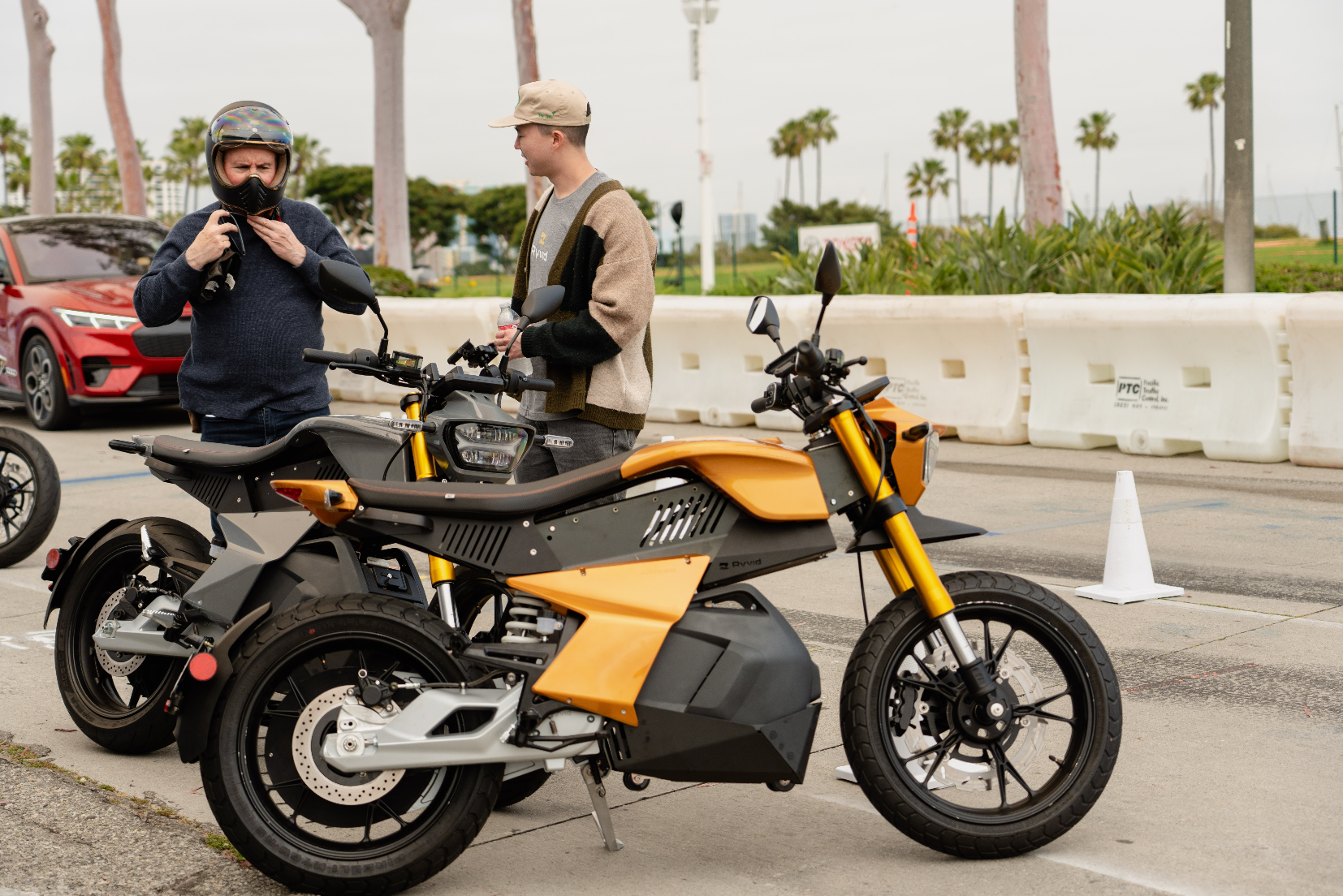Spring is finally here, and for many riders, that means one thing—it’s time to get back on the road! But before you twist the throttle and take off, your Ryvid needs a little post-winter TLC. Months of storage can impact your battery, tires, and brakes, and spring roads come with their own unique hazards.
To ensure a smooth and safe riding season, here’s your essential spring checklist for getting your electric motorcycle road-ready.
Spring Readiness Checklist for Your Ryvid:
1. Tire Pressure: The Foundation of a Smooth Ride
Cold weather can cause tires to lose pressure, affecting handling and traction. Before your first ride:
-
- Check tire pressure – For the Ryvid Anthem and OUTSET, we recommend 35 PSI for both front and rear tires.
- Look for wear and tear – Check for cracks, flat spots, or low tread depth.
A simple tire check can make all the difference in safety and performance!
2. Battery Health: Power Up for the Season
Your Ryvid’s battery may have lost some charge over the winter. Here’s how to get it road-ready:
-
- Fully charge overnight before your first ride.
- Flashing LED lights? If you see all four LED lights flashing on the battery, don’t worry — the battery is self-balancing. It will start charging once connected to the bike.
Avoid surprises—start the season with a fully powered battery!
3. Brake Check: Safety First
Stopping power is non-negotiable when it comes to safe riding. Before heading out:
-
- Inspect front and rear brake fluid levels – Hold the bike upright and ensure levels are above the minimum line.
- Check brake fluid color – If the fluid is dark or brown, it might be time to bleed the brakes (check out our YouTube channel for a video on Brake Fluid Replacement)
- Test responsiveness – Squeeze the brakes to ensure they feel firm, not spongy.
4. Light and Signal Test: Be Seen, Stay Safe
Spring roads can be unpredictable, and visibility is key.
-
- Check all lights – Test your turn signals, brake lights, and headlights (both high and low beams).
- Replace any dim or non-functioning bulbs to maximize visibility.
Working lights are critical for helping other drivers see you, especially on spring roads where drivers might not be used to seeing motorcycles yet.
5. Watch for Road Hazards: Springtime Surprises
Even if your bike is in perfect shape, the roads might not be. Winter leaves behind more than just cold memories. Sand, salt, and debris can linger on roads, especially on curves and intersections. Here are some common post-winter hazards every Ryvid rider should be aware of:
Potholes & Road Damage - Winter frost and snowplows wreak havoc on pavement.
-
- Stay alert for potholes that can damage your tires, suspension, or even frame.
- Scan the road ahead and avoid sudden swerves by adjusting your position early.
Sand, Gravel & Salt Residue - Leftover road treatments from winter can make surfaces slippery.
-
- Be cautious on turns and intersections where sand and gravel accumulate.
- Avoid hard braking or sudden acceleration in these areas to maintain traction.
Standing Water & Black Ice Remnants - Spring thaws create puddles that can hide potholes or cause hydroplaning.
-
- Watch for slick spots in shaded areas, where black ice can still linger early in the season.
- Slow down after a rainstorm to avoid hydroplaning on wet roads.
Increased Wildlife Activity - Spring means more animals on the move.
-
- Be extra cautious in rural or wooded areas, especially in the early morning and evening.
- Keep an eye out for small animals that may dart onto the road unexpectedly.
Final Thoughts: Gear Up and Ride Safe
Spring brings warmer days and open roads, but safety should always come first. By checking your tires, battery, brakes, and lights—and staying alert for road hazards—you’ll set yourself up for a fantastic riding season.
So gear up, stay visible, and enjoy the ride—with confidence and safety in mind!

